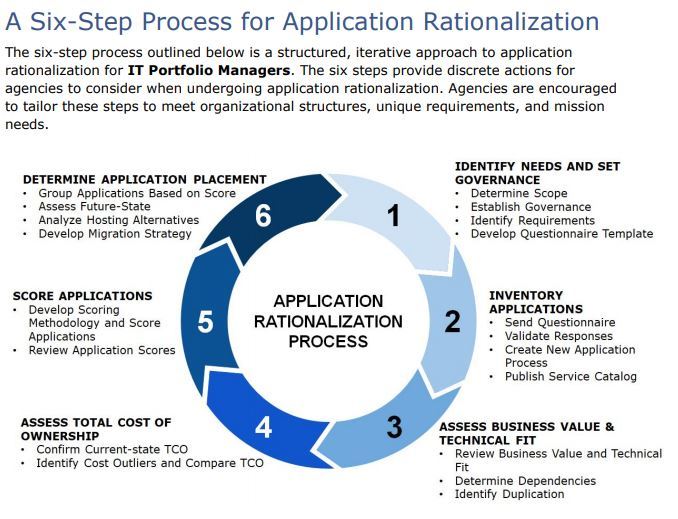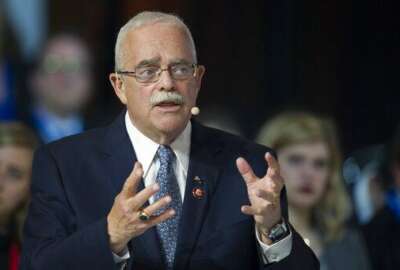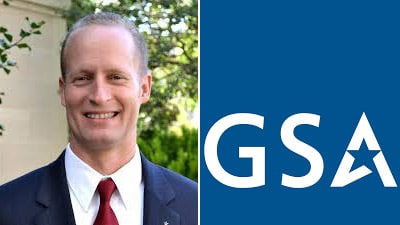
Application rationalization playbook: A prescriptive AND flexible approach to the cloud
The CIO Council’s Application Rationalization Playbook provides a six-step approach for how agencies can more efficiently manage their IT portfolios and decide...
The Small Business Administration may be the perfect case study for why agencies needed the new application rationalization playbook from the Chief Information Officer’s Council.
SBA began the process of rationalizing 50-plus applications one at a time as they move more and more into the cloud.
But Deputy CIO Guy Cavallo quickly put a stop to that approach.
Instead, Cavallo said SBA is using the Agriculture Department’s methodology to determine the priority list of applications that need to be modernized or eliminated.
“If you have app ‘x,’ should you do one of our things with it: Turn it off; Keep it where it is; Move it to the cloud in an infrastructure-as-a-service platform; Or should you rewrite it?” Cavallo said during the ATARC cloud summit on June 25. “We have a process and it will be documented. We are in the process of doing that.
SBA isn’t alone in its experience with application rationalization. Agencies have been talking about this effort for several years, but few have made real progress.
Three-pronged approach to the cloud
This is why the CIO Council’s playbook is out and why it’s coming at a perfect time.
“The playbook is one of three interconnected policy strategies that all work together. The Data Center Optimization Initiative (DCOI), Cloud Smart and Application Rationalization feed into, and off of, each other,” said a spokeswoman for the General Services Administration, which is where the CIO Council lives. “The application rationalization process supports optimization and/or closure of federal data centers, as agencies methodically parse through their enterprise IT portfolios and make informed business decisions on where to house applications and data. Agencies can determine whether the existing ‘as-is’ environment, or a proposed ‘to-be’ configuration is the best fit for their core mission, based on cost, business resiliency and service delivery. This rationalization process feeds directly into Cloud Smart decisions. As we streamline existing data centers, efficiency decreases, eventually leading to closure.”
The Office of Management and Budget released both the Cloud Smart strategy and the updated data center policy about a week after making the playbook public.
The council actually sent the playbook to the agencies several months ago after developing it through the Cloud and Infrastructure Community of Practice (C&I CoP). GSA says the application rationalization guide is based on enterprise portfolio management and migration/implementation strategies based on the Technology Business Management (TBM) framework.
“Two agencies, the departments of Energy and Justice, are piloting the playbook, and OMB and GSA will make the results available in the near future,” the GSA spokeswoman said. “Lessons we learn through the pilots will be added to the playbook, and we’re actively engaging with the CFO Act agencies to offer assistance with application rationalization.”
Margie Graves, the federal deputy CIO, said at the ATARC event that the playbook gives agencies a more prescriptive approach to understanding where to start and what applications they need to modernize first.
She said it also helps agencies create their business cases for modernization through the use of TBM standards.
“The biggest mistake that is often made is thinking of cloud migration as simply as replatforming. That’s not what it is. It’s an opportunity for you to reimagine the way you are delivering your services in a digital age,” Graves said. “The Application Rationalization playbook is a practical primer and walks you through all the elements you need to address. It gives you checklists and questions to ask. It makes sure you are covering all your bases.”
The playbook provides a six-step rationalization lifecycle that starts with identifying a need to determining a migration strategy including hosting alternatives.

Graves said this lifecycle should help reduce the risks agencies face as they modernize their systems.
“You should prioritize mission-critical systems for customer service and mission delivery,” she said. “There is a huge opportunity to incorporate cloud technologies into existing commercial services into this equation. It’s not simply automating existing ways of doing business but reimagining that digital world. This is one reason why at the outset you need to have the most critical mission owners with in-depth mission knowledge at the table.”
Focus on the customer
Chris Cairns, managing director at Skylight Digital and the co-founder of GSA’s 18F organization, said starting from the perspective of the end user is the one of the most important factors in the playbook.
“If you don’t understand what their needs, behaviors and pain points are from start to finish (a journey which often traverses the siloed structures of government), you fall into the trap of making assumptions about what’s best for them, which are often wrong, and ultimately designing a disjointed experience,” Cairns said by email. “I think this causes a glut of useless, unusable and duplicative applications that doesn’t support the end-to-end journey a user has to go through. I always hear from CIO organization that ‘we implemented it, but the business/customer doesn’t use it.’ That’s usually because it wasn’t implemented in a user-centric way. The need for application rationalization is really just a symptom of the root-cause problem: A lack of focus on the user experience. We need more investment on providing guidance on how to do that well.”
Cairns said the next logical step would be to create a playbook around creating a cohesive user experiences as part of application rationalization.
“I would like to see more investment from federal IT leadership in thinking about how to ‘rationalize’ the disjointed services that citizens, businesses, etc. experience on a daily basis. The reason these services are so disjointed is because their design reflects the siloed structures of government, when they should be designed to reflect the end-to-end task or transaction that needs to be performed, regardless of structure,” he said. “Let’s rationalize that. I also think such an outside-in view, as opposed to an inside-out view, would lead to even smarter rationalization of applications because you’re looking at things from the perspective of the actual users.”
The CIO Council fully intends to update the playbook as best practices and new requirements emerge.
“Every agency has always performed at least some application rationalization, which begins whenever a new application is launched. We’re now building upon this initial process to gather all the (apparent and not-so apparent) information about cost, risk, business resiliency and service delivery,” the GSA spokeswoman said. “We speak with all components involved with an application, gathering as much information as possible to support informed business decision-making. We aim to track the total cost of operation over time, to clearly see where efficiencies can be gained. The Application Rationalization Playbook is intended to be a living document, and as we collaborate with, and learn from, our communities of practice and centers of excellence, the lessons we learn will be added to the playbook. Since every agency has a different core business mission, the playbook is knowledge-based reference, and each agency can pick and choose their rationalization decision points, as it makes sense for their environment.”
Copyright © 2025 Federal News Network. All rights reserved. This website is not intended for users located within the European Economic Area.
Jason Miller is executive editor of Federal News Network and directs news coverage on the people, policy and programs of the federal government.
Follow @jmillerWFED





